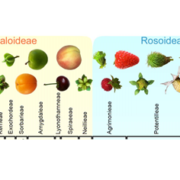
Evolution of fruit types in the Rosaceae family
Plant Science Research Weekly, Research0 Comments
/
The evolution of fruits might have been the most important feature that made angiosperms so successful. Fruits protect seeds and contribute to seed dispersal, as well as comprise a food source for humans and other animals, therefore, studying their evolution would help us shed light on the evolution…
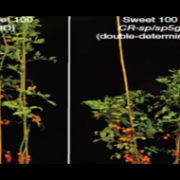
Gene editing to produce doubly-determinate, early-yielding tomatoes ($)
Plant Science Research Weekly, ResearchTomatoes have an indeterminate growth pattern that arises from the balance of flower-promoting (florigen) and flower repressing activities. Suppressing this flower-repressing activity leads to greater determinacy and facilitates cultivation. Soyk et al. compared flowering times in short- and long-days…
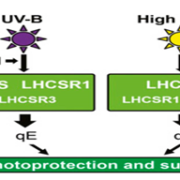
Photosynthetic machinery protection induced by UV-B in Chlamydomonas
Plant Science Research Weekly, ResearchLight is good, too much light is bad. Photosynthetic organisms can dissipate excess light through a variety of means including non-photochemical quenching. Czechowski et al. show that in Chlamydomonas perception of UV-B light via the nuclear/cytosolic receptor UVR8 induces accumulation of proteins that…
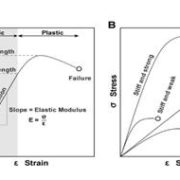
Reviews: Seed dormancy and germination ($)
Plant Science Research Weekly, ResearchA pair of reviews in J. Exp. Bot. covers aspects of seed dormancy and germination. Steinbrecher and Leubner-Metzger (10.1093/jxb/erw428) provide an excellent introduction to materials science including stress-strain curves and Young’s Modulus, which they then apply to an understanding of the biophysics…
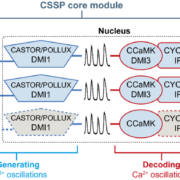
Review: Nuclear Ca2+ signaling in endosymbiosis
Plant Science Research Weekly, ResearchThe Common Symbiosis Signaling Pathway (CSSP) conveys the perception of endosymbionts (rhizobia or mycorrhizal fungi) at the plasma membrane to the nucleus to initiate transcriptional responses. Calcium oscillations are core to the CSSP, whether the endosymbiont is fungal or bacterial. Barker et al.…

Review: Physics of pollinator attraction
Plant Science Research Weekly, ResearchFlowers use a variety of strategies to attract pollinators and ensure successful pollination, including color and scent. Moyroud and Glover review some of the less familiar strategies including physical alterations to reflected light. As one example, conical epidermal cells on snapdragon flower petals…

Metabolic control of tobacco pollination ($)
Plant Science Research Weekly, Research, Research BlogA germinated pollen grain extends a pollen tube through the stigma and style of the flower to deliver two sperm cells to an ovule. Tip-directed growth of the pollen tube requires a large energy input, but how does the pollen tube obtain energy while growing through the flower tissues? Goetz et al.…
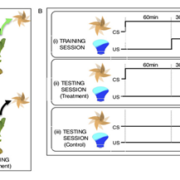
Learning by association in plants
Plant Science Research Weekly, ResearchAnimals can easily establish associations between environmental cues and food sources, acquiring conditional information that guides their foraging behaviour and in consequence, their survival. Proving whether plants show association or conditional learning has been tricky, but fortunately for us, Gagliano…
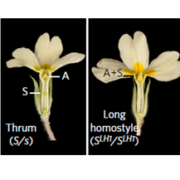
Genetic basis of primrose floral dimorphism
Plant Science Research Weekly, ResearchSelf-fertilization in Primula is avoided by the production of two flower forms (morphs), one with a long style in which the stigma is elevated above the anthers (the L morph or pin) and one with a short style in which the anthers are well above the stigma (the S morph or thrum), although there are also…

